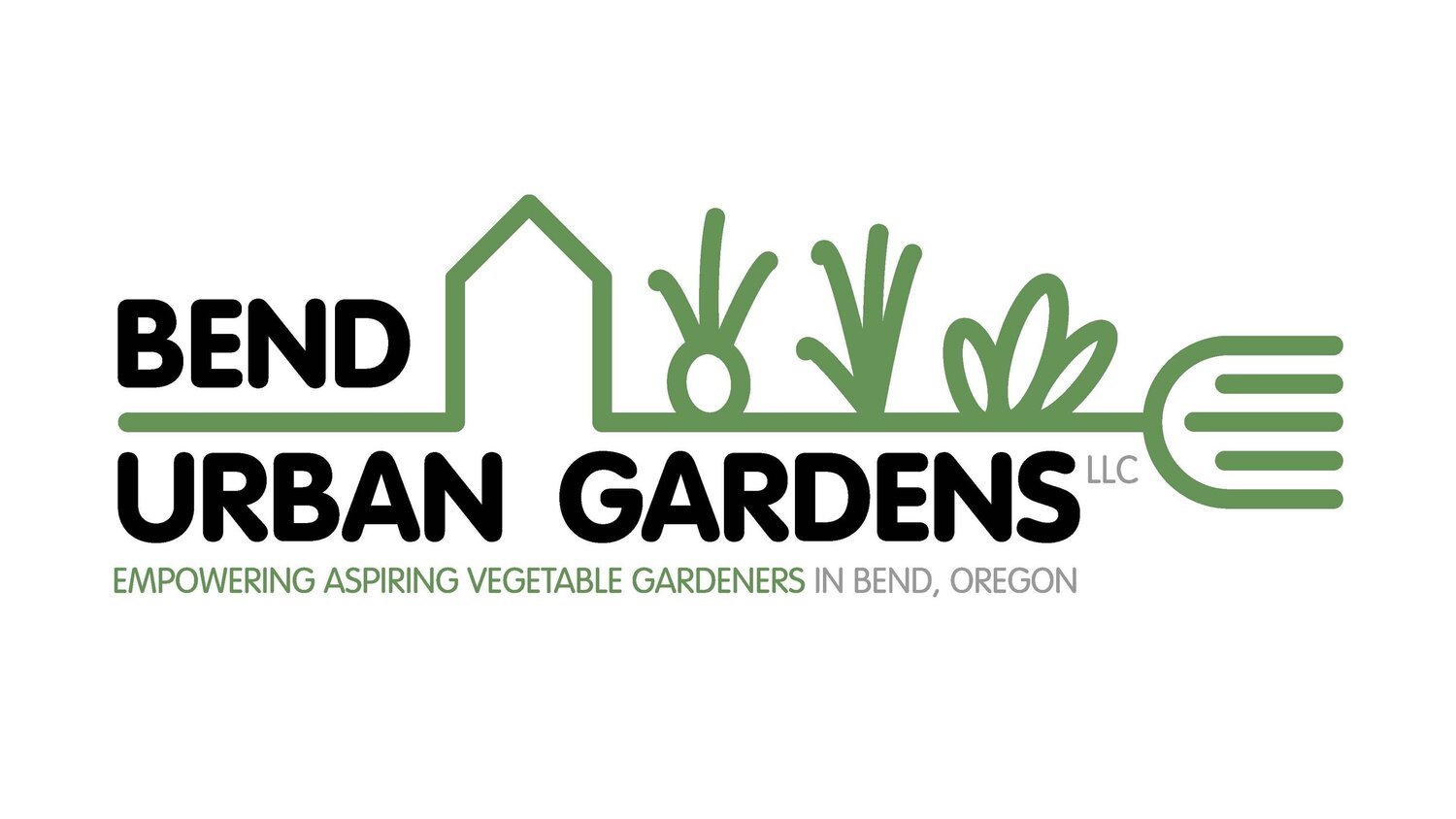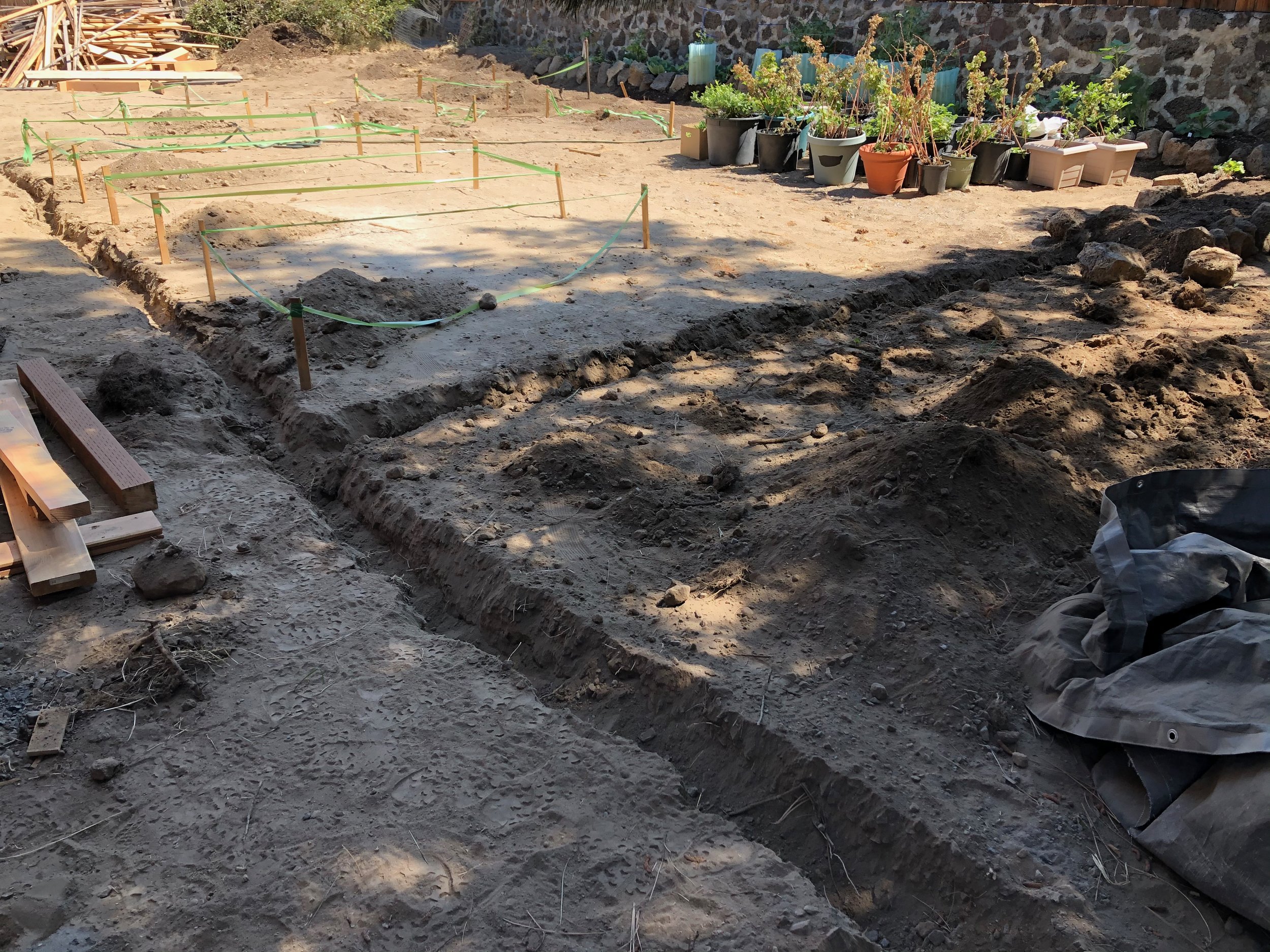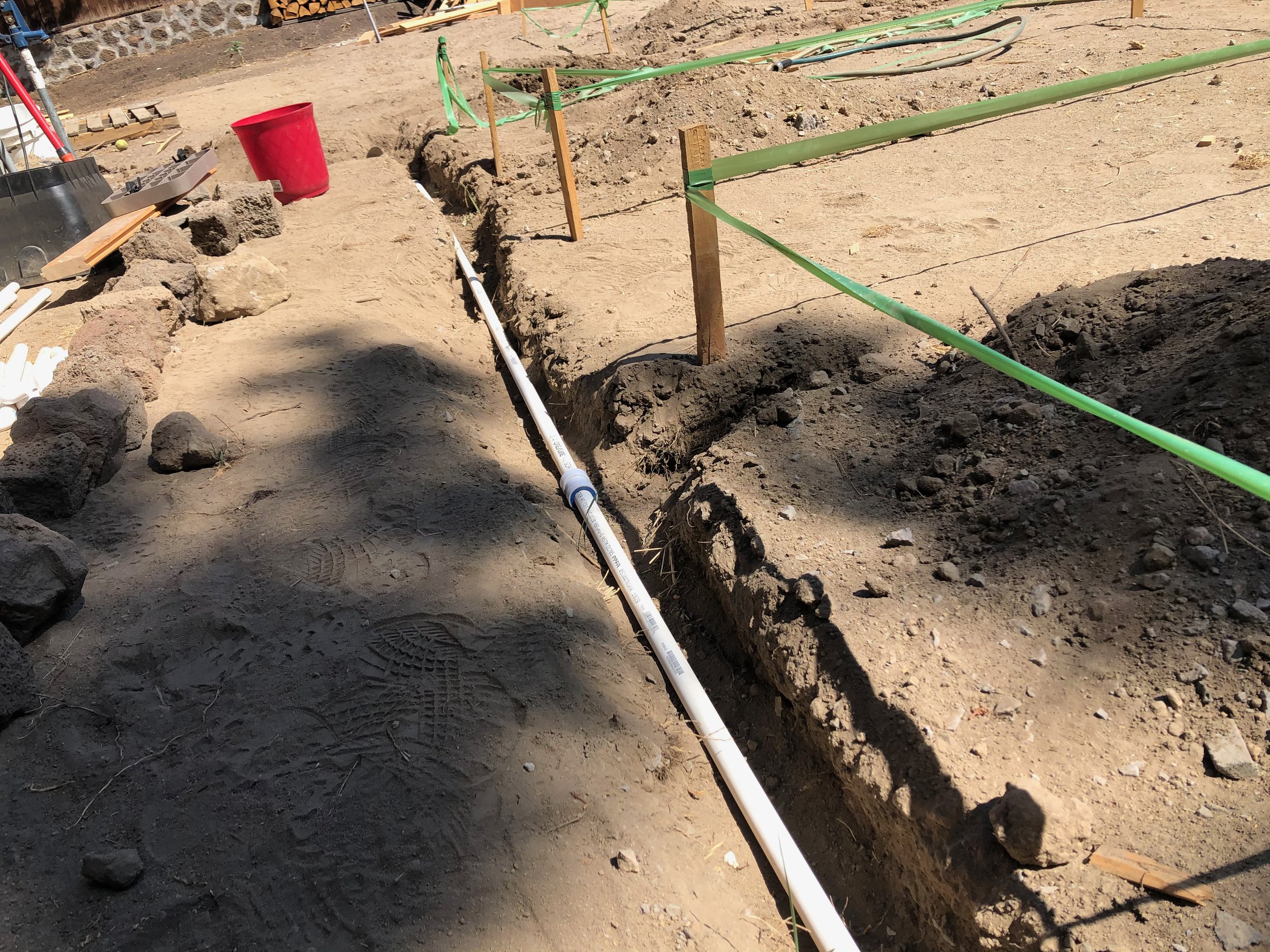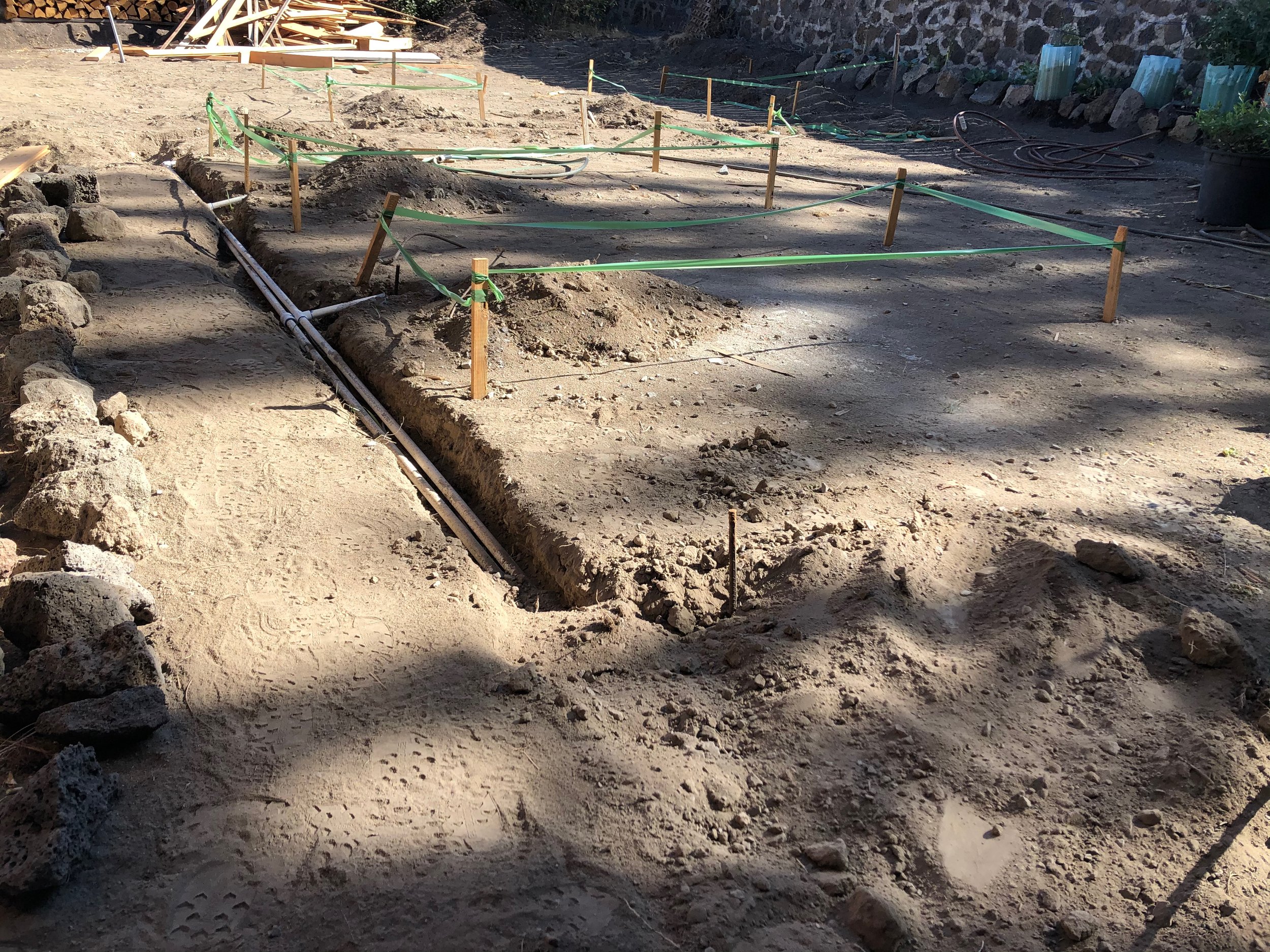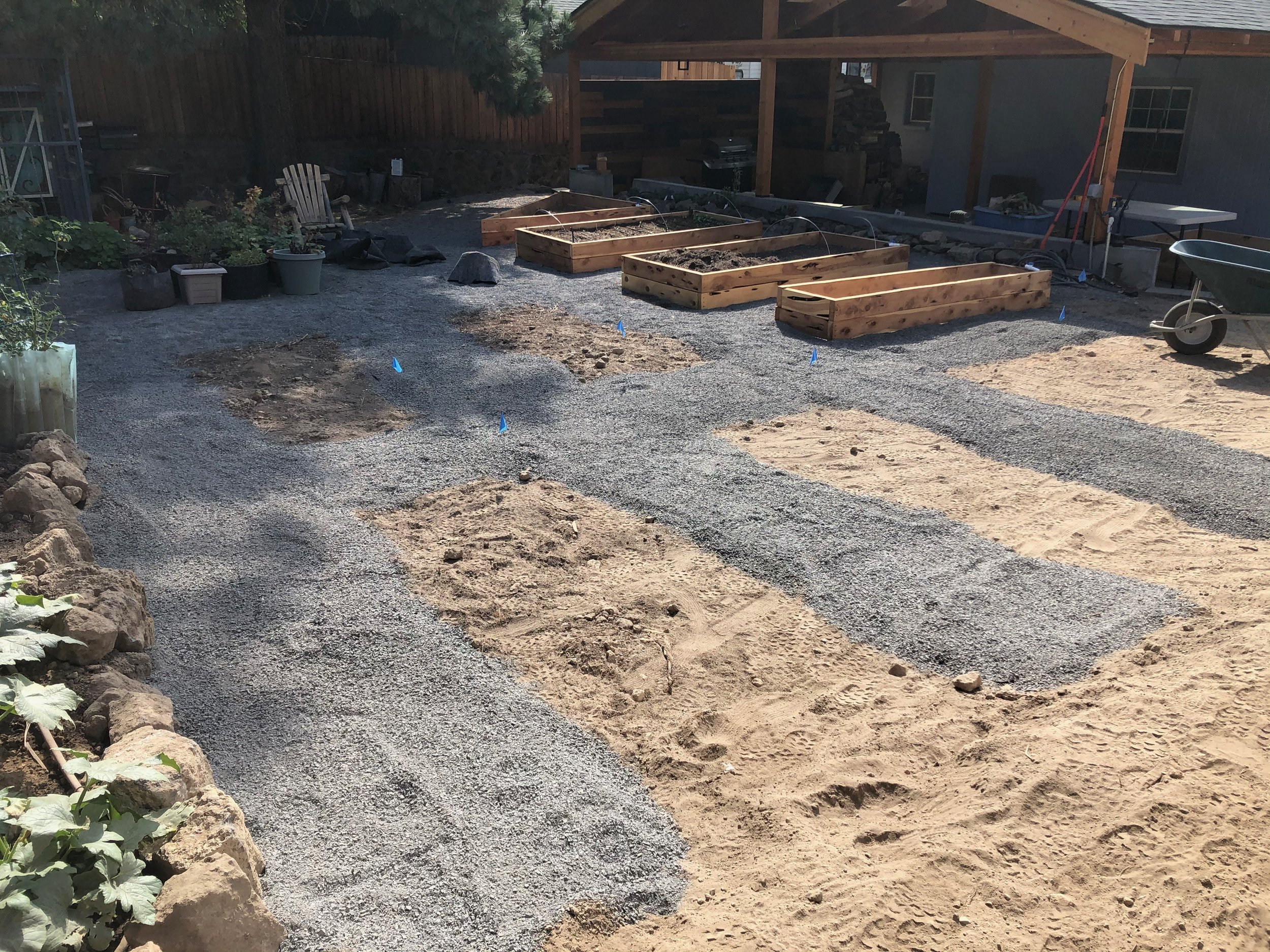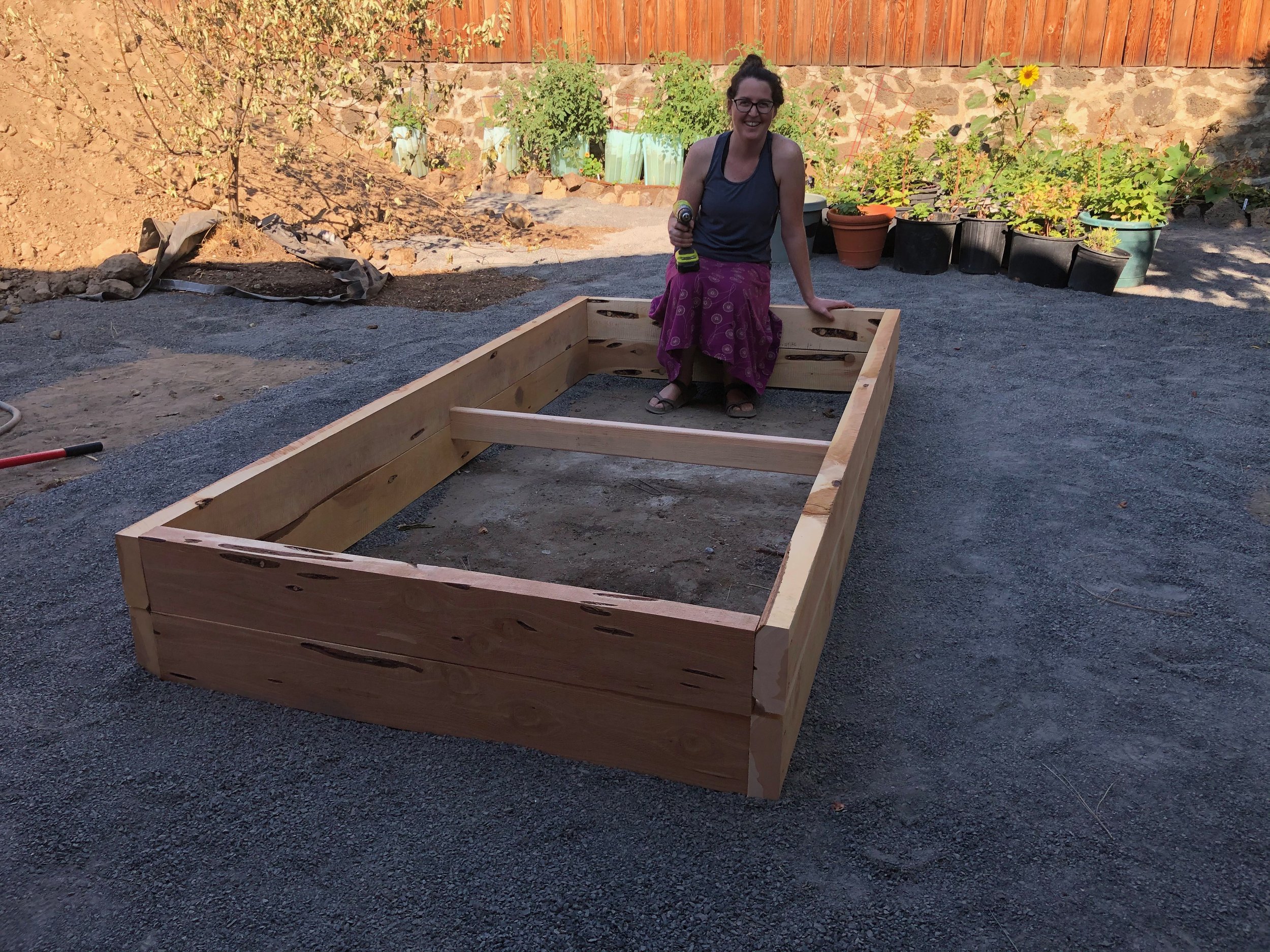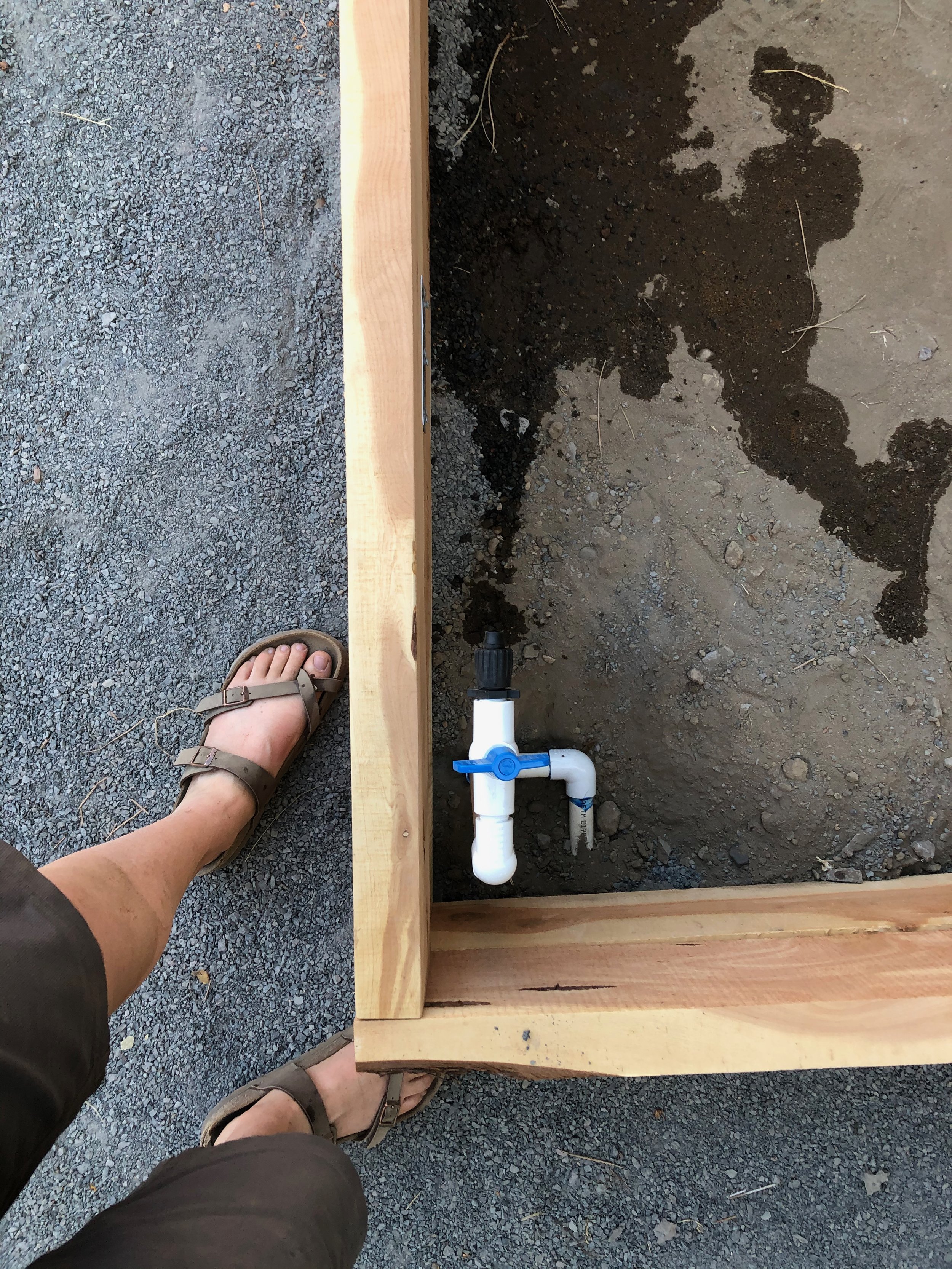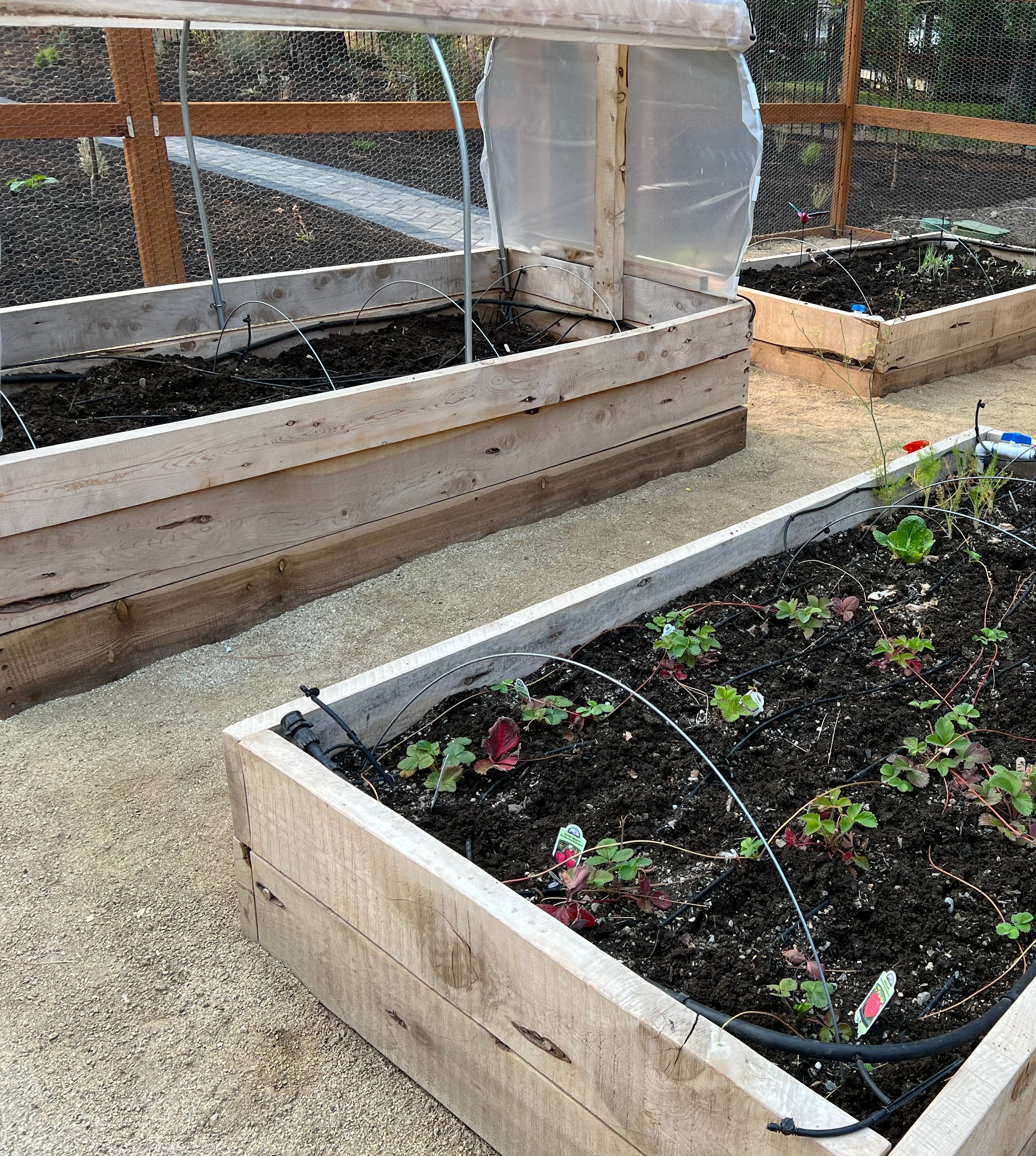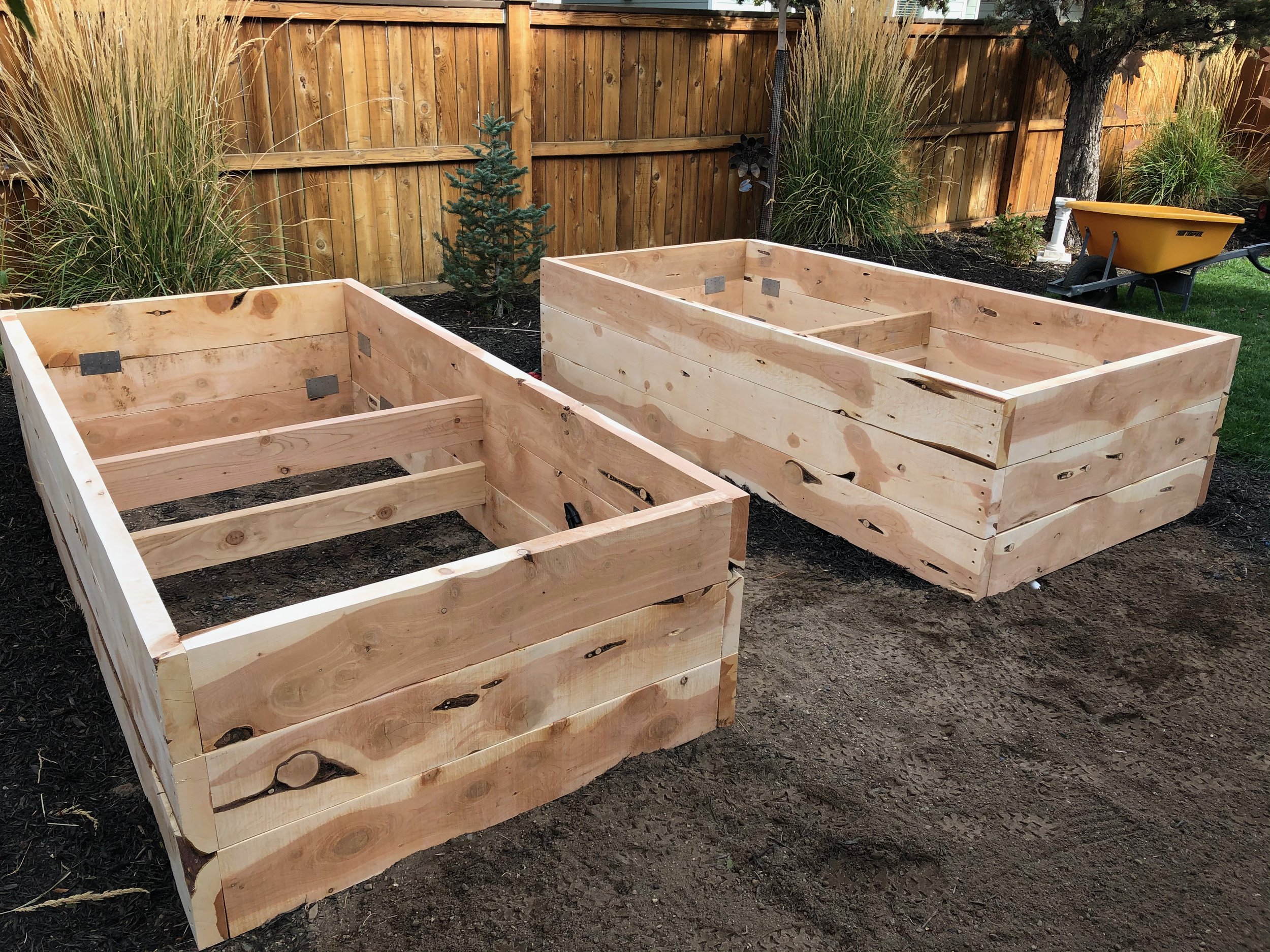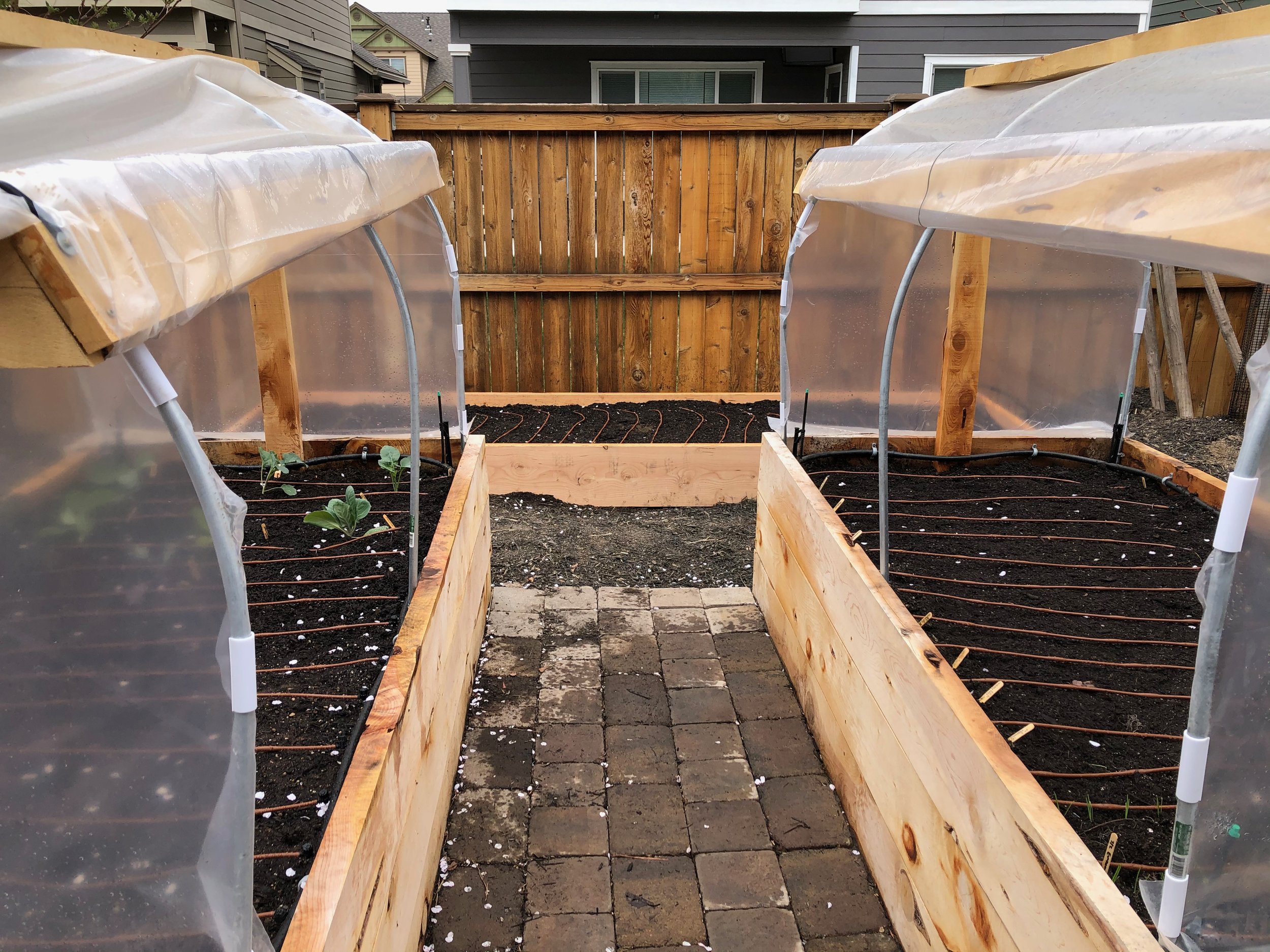When do I install pathway material in my raised bed garden?
There are many “right” ways to build and install a raised garden bed. In our experience, the order of operations comes down to gardener preference and availability of materials. The essential component of raised bed installation that needs to happen before any pathway material is installed is the trenching for and installation of irrigation. Whichever way you go, we recommend first marking the locations of your future raised garden beds using stakes and string, spray chalk (although it doesn’t always stick well to the high desert’s dry “moondust”), or sprinkle flour.
In our demonstration garden, we chose to install our pathway material before our raised beds. We did this because we wanted the ergonomic benefit of the full depth of the beds instead of having a few inches of our boards covered by gravel at the bottom. Also, even though we built our raised garden beds out of super durable and rot resistant juniper and cedar, we figured setting our boards on top of the 1/4 minus gravel we chose for our pathways would result in less direct contact with soil for our boards, resulting in longer bottom board life. To go this route, we recommend the following steps:
Irrigation: Trench irrigation lines, lay pipe, and stub irrigation into your preferred corner of each bed location.
2. Landscape fabric: Fill your trenches in with soil and then lay down woven landscape fabric in the pathways (sorry, we missed taking photos of this step during our demonstration garden build, so you’ll just have to believe us that there is indeed landscape fabric under that gravel). It is helpful to stick with a consistent pathway width (we like 3’) so you can simply roll out your 3’ width landscape fabric, secure it with landscape staples and easily peel back your pathway material if you need to access your irrigation in the future.
3. Install your pathway material of choice (rock, bark chips, etc.) 2-4” thick.
4. Build your raised beds and finish stubbing up your irrigation.
If you choose to blanket your entire garden space with your pathway material before building your raised beds, we recommend raking away the material (the best you can) directly beneath your raised beds to allow for better drainage and benefit from your imported raised bed soil having direct contact with our native soil.
Many gardeners prefer to bring in their pathway material after installing raised beds, which is fine too! Whichever build order you go with, we do strongly recommend some sort of pathway material to keep dust and weeds down. It’s also amazing what pathway material does to make your garden space look and feel more tidy and complete!
